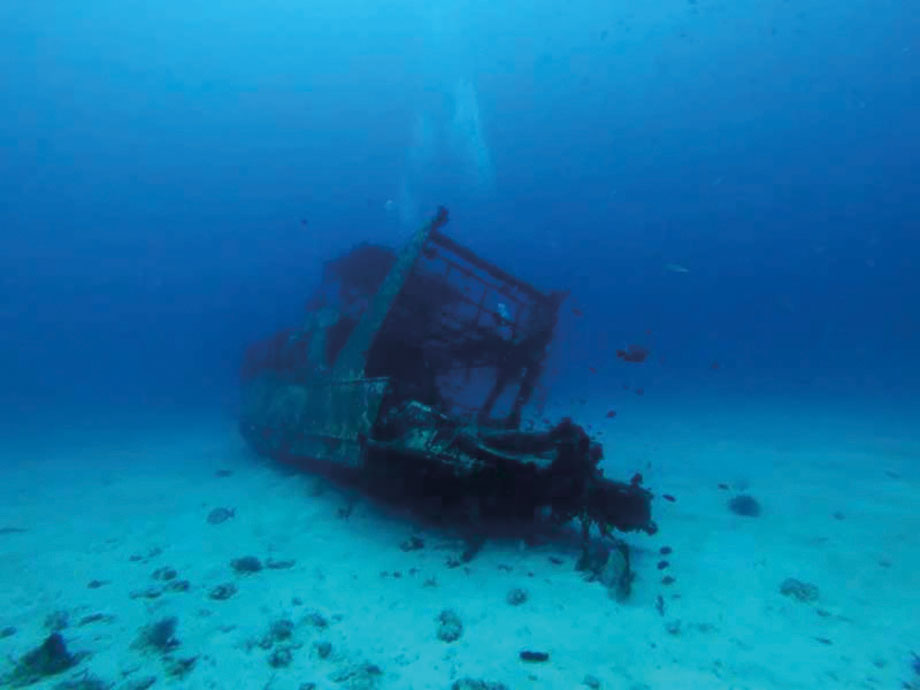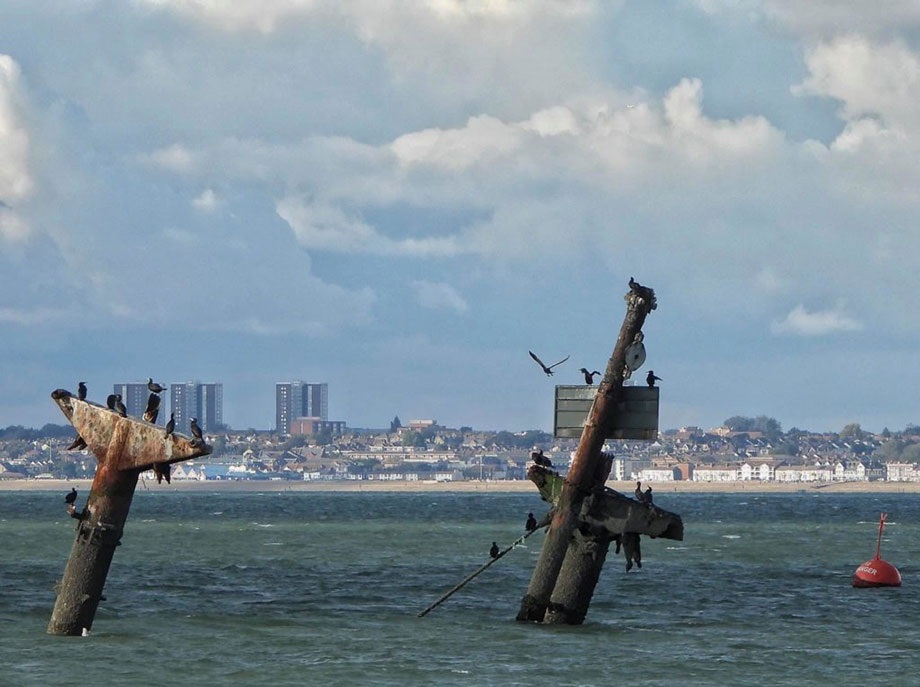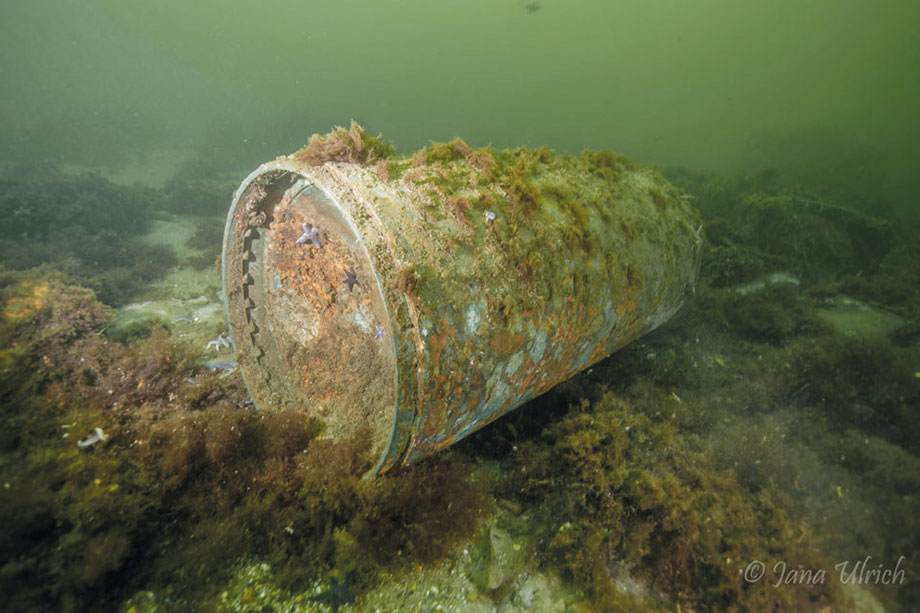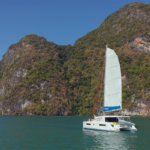The pollution in our waters continues to be a major source of concern, but some of the pollutants are larger than you might think…
After a summer in which we saw little to no rain, it then became a case of rain, rain and yet more rain. Some areas in the South East had 60 per cent of their November rainfall in just 12 hours, and so the news ‘leaks’ of multiple and prolonged sewage laden overflows affecting beaches all around our coasts was hardly a surprise.
However, before we join in the growing clamour that something has to be done about the water companies, there are other, longer term pollution sources that are an increasing worry for those who enjoy the time they spend afloat.
For one group of All at Sea readers, there is a report that has the potential to be of real concern, as it impacts those who go afloat just about every day of the year to enjoy ‘sport’ fishing. It has long been appreciated by the many fisherman who head out, often way offshore, that the numerous wrecks on the seabed around our coasts are a great target area, but some worrying concerns identified in an EU funded survey (headed up by the Centre for Microbial Ecology at the University of Ghent) suggest that all is not well beneath the waves.

GERMAN TRAWLER
The subject of their survey was the John Mahn, V-1302, a German trawler sunk by the RAF just off the Belgian coast some 80 years ago. Previously wrecks had not been a problem, as wooden hulls and spars with their cotton sails would degrade naturally, but iron and then steel hulls are another matter altogether. In time the metal starts to flake away, and as the structure of the hull deteriorates, any cargo or contents that had been carried on board will get exposed to the actions of the sea.
The close survey of the John Mahn, which lays 35m below the surface, focused on the microbiome that surrounds the wreck, testing for traces of heavy metals and other toxic pollutants such as arsenic and pyrene.
The latter is of concern as this is a ‘PAH’, a polycyclic aromatic hydrocarbon, a chemical that is known to have a detrimental impact on the microbial ecology. Further testing on the silt around the hull revealed a cocktail of various biproducts arising from the breakdown of the hull, with many of these having the potential to enter the food chain, which could then affect fish that are caught in these locations.
WAR WRECKS
Whilst there is a wide range of wrecks around our coasts, there is little doubt that the remains of the hundreds of warships on the seabed add a further level of complication as the casings around the ammunition still onboard corrode away. Once the sea water is able to attack the propellents and warheads the explosives used, often TNT, can get released into the water column, which can have a particularly toxic effect on marine wildlife.
There is a further interesting distinction that many of the wrecks from WW2 would have been oil powered and, although the very act of being attacked and sunk might have breached some of the tanks, the worry is that there are huge quantities of oil still trapped on the seabed that could be released at any time.
In contrast, the WW1 wrecks, most of which were coal fired, are also able to create an equally worrying situation, as not only have they been sunk for longer, but surprisingly coal can produce some unpleasant biproducts after 100 years or more below the waves.
Thankfully there is some brighter news coming from the research carried on the John Mahn, as many of the identified organisms have shown a resilience to the presence of pollutants, with the wreck acting as a home to a wide range of aquatic species, but at the same time this is a fairly small wreck in an area of strong tides that are helping to maintain the environmental balance.
UNKNOWN HAZARDS
Indeed, the John Mahn is, in military wreck terms, little more than a starting point, albeit an interesting one. Moving up the scale, there are more wrecks that are larger and come with a far greater risk of creating a long-term pollution hazard.
The North Sea alone is the known final resting place for literally thousands of wrecks, not only of boats but also of aircraft, with many of these posing significant long-term issues.
Moving on to the English Channel, there is an even greater density of wartime debris, with some of these close enough to the shore to add new levels of concern. Just how ‘real’ this problem might be was seen in 2017, when more than 150 people needed medical treatment at Birling Gap, on the Sussex coast, after a chemical haze drifted in from the sea.
The source of this was never identified, but in its report Defra identified the likely sources as either a ship out in the channel (which could have been identified using AIS) or a release from a wreck on the seabed.

GROWING PROBLEM
The issue that faces the UK and other coastal nations is only getting bigger with each passing year, with it already being a huge undertaking to dive down and explore even those wrecks identified as a priority. As with the Richard Montgomery, the wrecked ammunition ship resting on a sandbank in the Thames, the mere act of checking the condition of a wartime ship is not only expensive, but a highly risky activity.
If on-site research indicated that there was still oil in a wreck, it might be possible to extract it and bring it to the surface for safe disposal, but recovering 80-year-old munitions would be a very tricky task indeed.
Then there is the issue that so many of the wartime wrecks have War Grave status and thus cannot be disturbed, so this is clearly a problem that cannot be easily addressed. But addressed it must be, for as the demand for offshore wind farms takes up more and more of the sea bed, the risk of a wreck being compromised, either by accident or design, will only grow.
 Solent based dinghy sailor David Henshall is a well known writer and speaker on topics covering the rich heritage of all aspects of leisure boating.
Solent based dinghy sailor David Henshall is a well known writer and speaker on topics covering the rich heritage of all aspects of leisure boating.















